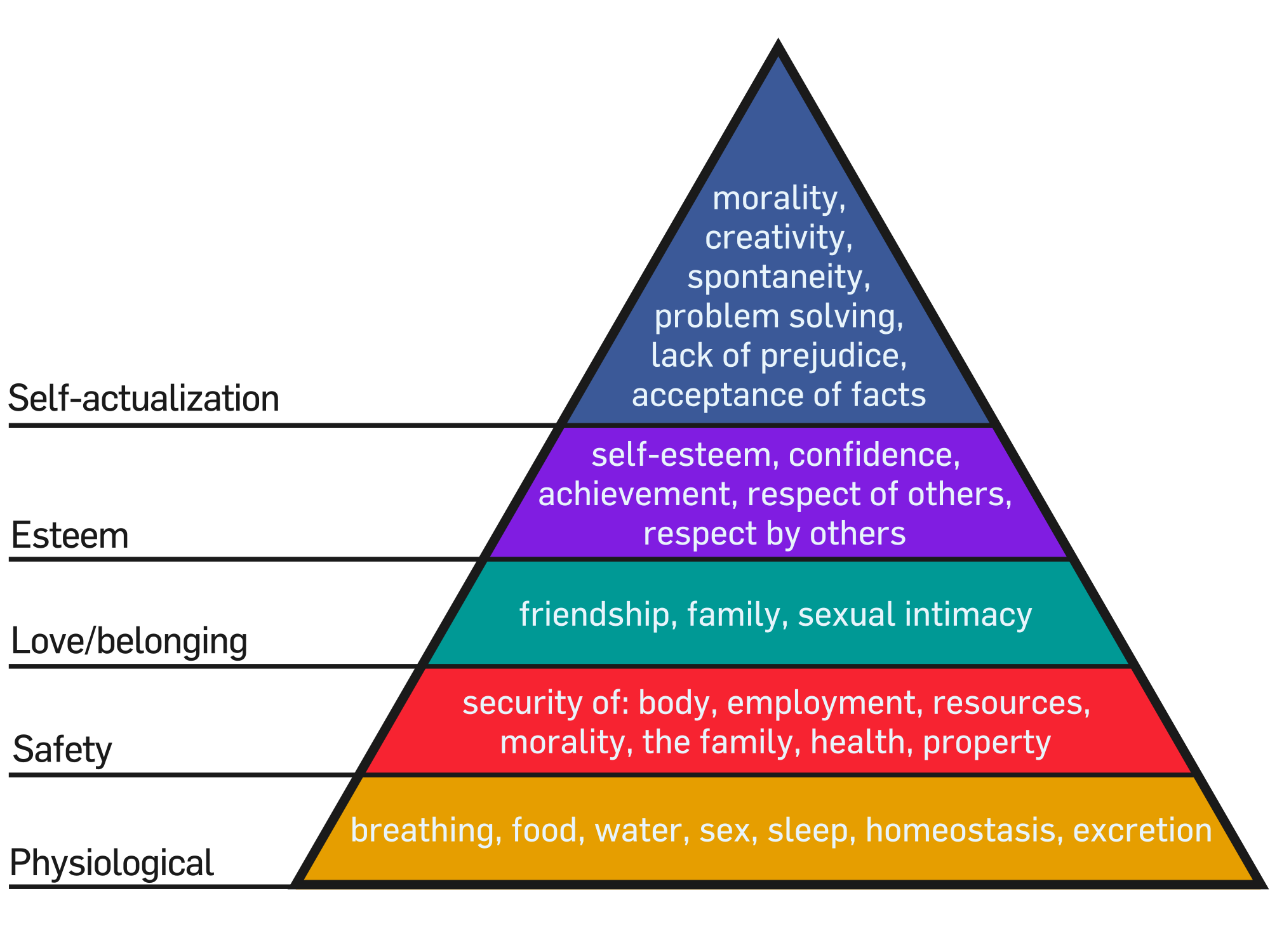Maslow studied what he called exemplary people such as Albert Einstein, Jane Addams, Eleanor Roosevelt, and Frederick Douglass rather than mentally ill or neurotic people, writing that "the study of crippled, stunted, immature, and unhealthy specimens can yield only a cripple psychology and a cripple philosophy." Maslow studied the healthiest 1% of the college student population.
Maslow's theory was fully expressed in his 1954 book Motivation and Personality. The hierarchy remains a very popular framework in sociology research, management training and secondary and higher psychology instruction.
The Maslow's hierarchy of needs is this:

I think that this hierarchy defines very good the human needs. This hierarchy is for all the people of different religion, different culture, different country, etc. It's important to know it for all.
No hay comentarios:
Publicar un comentario